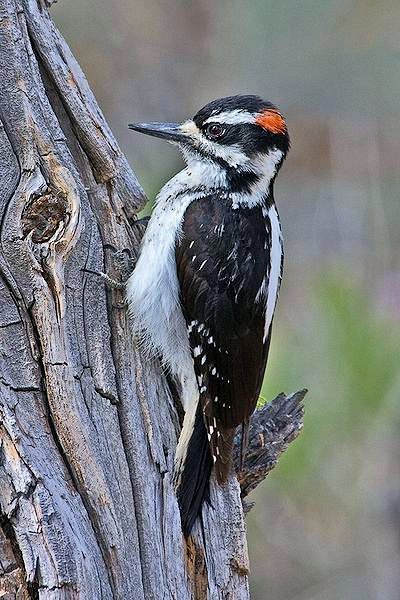
|
Temperature -- Physical Adaptations by Birds - Page 2 The Hairy Woodpecke r provides an example of both these rules. Found from near the tree line in Alaska and Canada to western Panama in Central America, this single species encompasses birds in Alaska that weigh more than 120 grams to birds in the tropics that weigh less than 40 grams. Other body proportions vary similarly. Because colder climates are associated with mountain areas as well as northern latitudes, we also find larger Hairy Woodpeckers --- or the larger birds of most species --- farther south of the mountains. The ocean also affects climate; coastal areas do not get as cold as adjacent inland area, and we find smaller birds of most species extending farther north along the Pacific coast. Within a species, the changes are so gradual that each population is capable of interbreeding with the next. Birds show other morphological, physiological, and behavioral adaptations to the rigors of climate. For example, have you ever wondered how a duck can tolerate icy water on a cold winter day? First realize that no matter how cold the air temperatures is, the temperature of unfrozen water cannot be below 32 Degrees F (0 degrees C). The water may be the warmest place in the area. In addition the duck has physical adaptations that protect it from the chilling effect of the water. A thick layer of down covered by waterproof feathers traps air in and keeps water out. A thick layer of fat just under the skin provides additional insulation. But what about those bare legs sticking down in to the cold water? They also provide an example of adaptation to climatic extremes. The arteries carry warm blood from the body lie right next to the veins carrying cold blood from the feet. The warm blood going to the feet warms the cold blood so effectively that the blood going back to the body is nearly the same temperature as the blood that is leaving. During the summer heat the blood vessels dilate; the flow of warm blood to the legs increases and excess heat is lost. Color can also enhance heating or cooling. Black birds absorb much more of the sun's warmth than white birds; thus, black is a thermally adaptive color in cold weather, and white is thermally adaptive in hot weather. However, a number of other factors also influence color -- camouflage and mate attraction, for example. As a result the role of color in the regulation of body temperature is often unclear. |